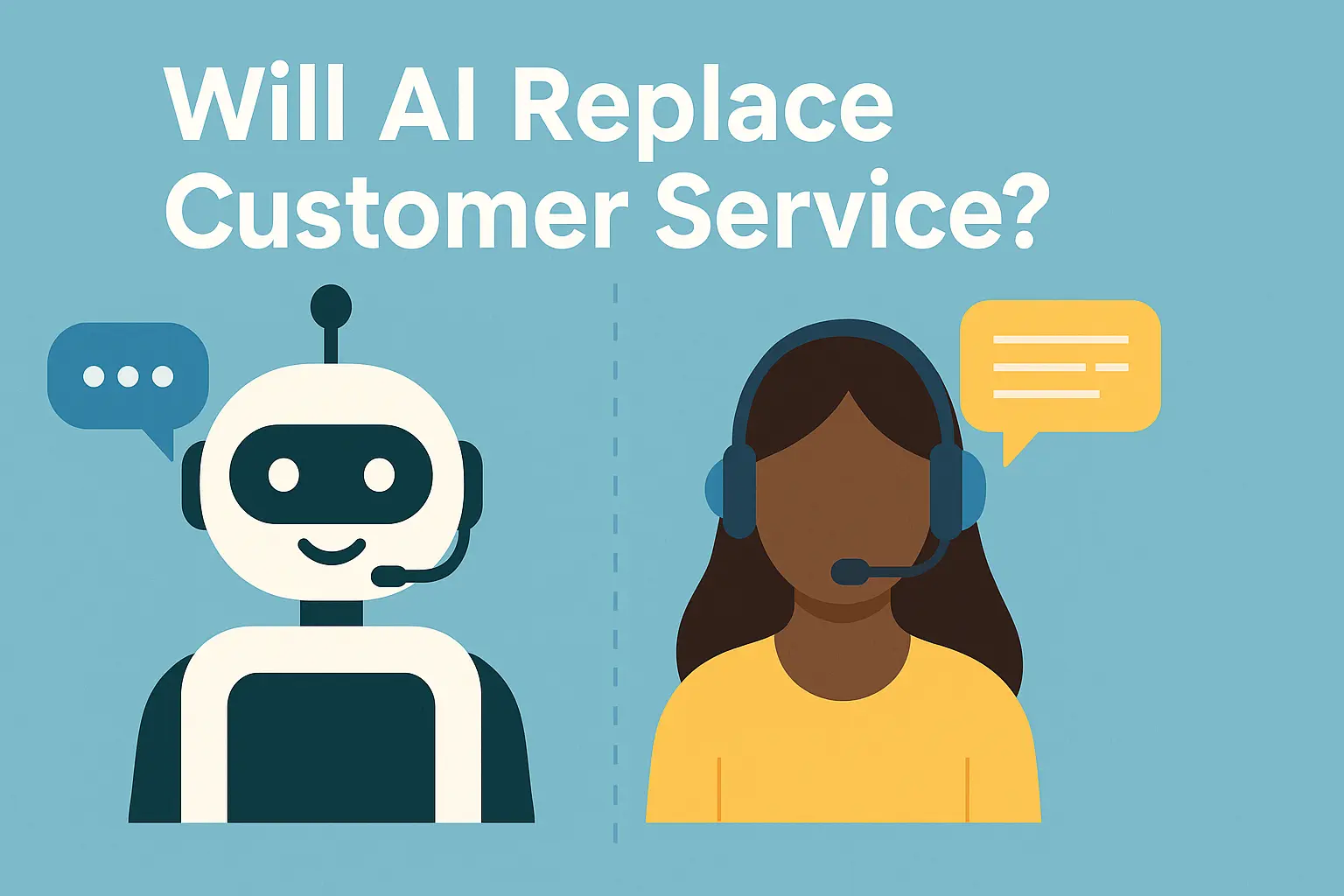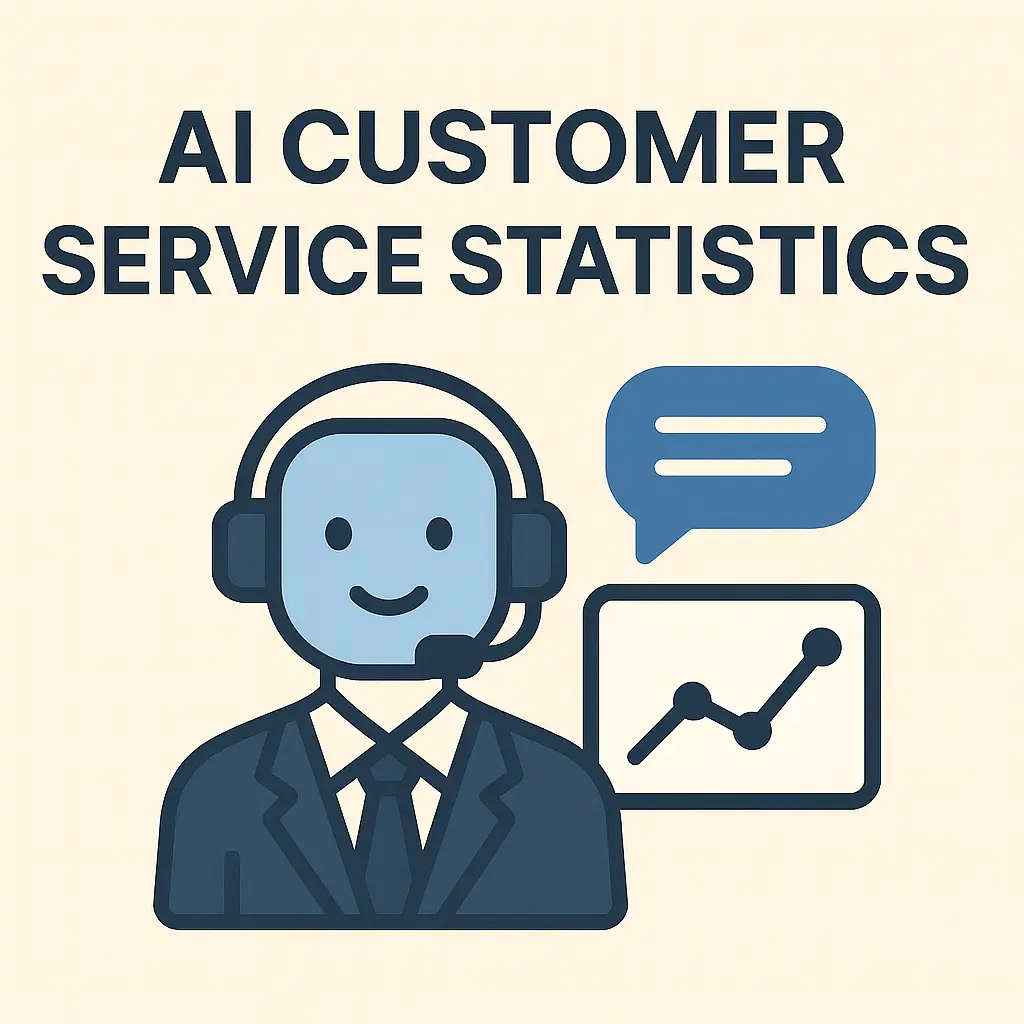Will AI replace Customer Service?
With the rapid growth of AI, many jobs are under threat of automation. But will ai replace customer service as we know we it?

Yes.
But not completely.
According to Gartner, generative AI could reduce customer service agent headcount by 20–30% as early as 2026, and by 2029, advanced ‘agentic AI’ systems may autonomously resolve up to 80% of support issues, lowering costs by about 30%.
So some customer support will be replaced by AI.
There is no avoiding that.
Especially at the first point of contact with the customer.
This is because AI chatbots are always available, they don’t get tired, and they can respond instantly to thousands of customers at the same time. They’re cheaper than hiring big teams of agents, and they can handle the simple, repetitive stuff customers want answered quickly, things like order status, shipping updates, or resetting passwords.
For businesses, that means lower costs and faster service.
For customers, it means less waiting around.
But here’s the catch: the closer you get to trying to replace all of customer support with AI, the more quality drops. Some companies are pushing resolution rates above 40% today, but customer satisfaction quickly declines. - many organizations report that metrics like resolution accuracy and overall customer satisfaction stagnate or even get worse after AI implementation.
Hitting 80% across the board sounds great on paper, but in practice it’s nearly impossible to maintain a high CSAT (Customer Satisfaction score) at that level.
However, complete replacement will probably not happen (I say probably because it is impossible to know how exactly AI is going to evolve over the long term).
Why AI Will NOT Fully Replace Customer Service
1. Some problems are too human
AI is great at handling quick, repetitive stuff like resetting passwords, order updates, and FAQs.
But when a customer is angry, frustrated, or just needs someone to listen, AI hits a wall. You can program empathy into a script, but real empathy comes from a human being.
2. Trust is built with people
Customer service isn’t only about fixing problems.
It’s also about leaving people feeling heard and cared for. A good support agent can turn a bad situation into a loyal customer for life. That kind of relationship building is hard to replicate with lines of code.
3. The messy edge cases
AI thrives on patterns. But what about the weird, complicated, one-off issues that don’t fit the usual mold? Humans can think outside the box, bend rules when necessary, and make judgment calls AI just can’t.
4. Accountability matters
If something goes really wrong, say a bank error or a healthcare issue, customers want to know an actual person is responsible.
At some point, there needs to be a human touch.
5. Rules and regulations
In certain industries, humans aren’t optional.
Finance, healthcare, government, these sectors will always require human oversight no matter how advanced AI gets.
What is the future of customer service with AI?
The way I see it, the future isn’t AI versus humans. It’s AI and humans working together.
AI will handle the repetitive, routine stuff, the things customers want solved fast without waiting in line. Think: order updates, scheduling, FAQs, troubleshooting steps.
It’ll be like the first line of defense, clearing away the simple issues so people don’t waste time.
But when the situation gets tricky, emotional, or too important to risk a mistake, humans will still be the ones stepping in. That’s where empathy, judgment, and accountability come into play, things AI can’t fully deliver.
And this isn’t just my take.
Wilson & Daugherty (2018) actually put it nicely: AI isn’t here to replace humans but to augment them.
They call it “collaborative intelligence.”
In their study of 1,500 companies, they found firms perform significantly better when humans and AI work together, each enhancing the other’s strengths.
Humans, for example, need to train AI systems with the right data and tone (especially if empathy is part of the brand voice), and they need to sustain them by making sure chatbots work smoothly, responsibly, and safely. AI doesn’t run itself. It’s powered by human oversight.
In this hybrid setting, AI acts as the filter, solving the bulk of low-level requests instantly, while humans focus on the conversations that actually need a human touch.
Companies save money, customers get faster answers, and support agents spend more time doing meaningful work instead of answering “Where’s my order?” for the thousandth time.
That balance, AI for speed and humans for connection, is what the future of customer support looks like.
Conclusion: Will AI replace customer service?
Not completely.
It will change it, streamline it, and take over the repetitive stuff. But the human touch—listening, understanding, and building trust—isn’t going anywhere.
The future of customer support isn’t man versus machine. It’s man with machine. And the businesses that embrace that balance will be the ones that thrive.
Ready to Build Your AI Chatbot?
Create a smart ai chatbot for your website in just a few minutes. No coding required!
Smart AI Responses
Powered by advanced AI technology
Quick Setup
Get started in under 5 minutes
Free to Start
No credit card required

